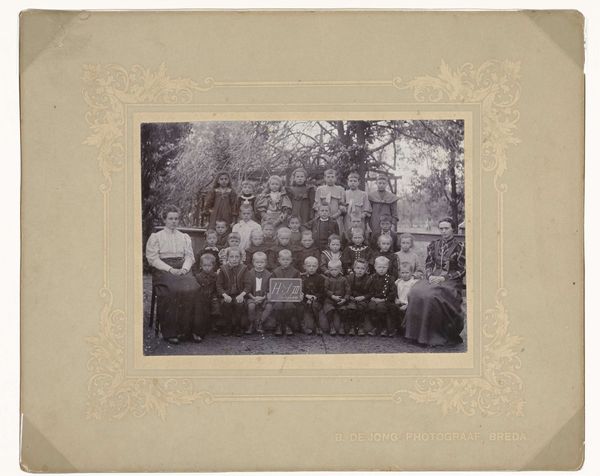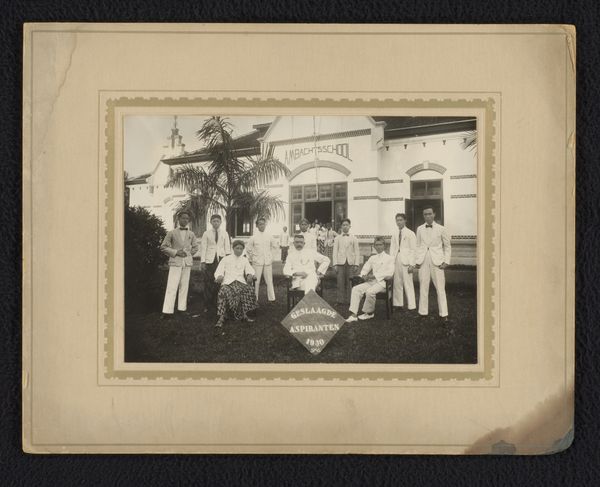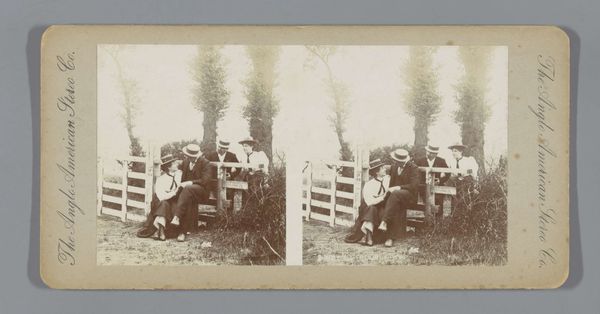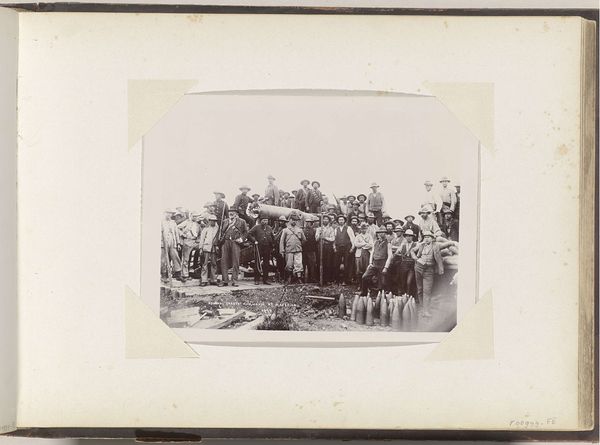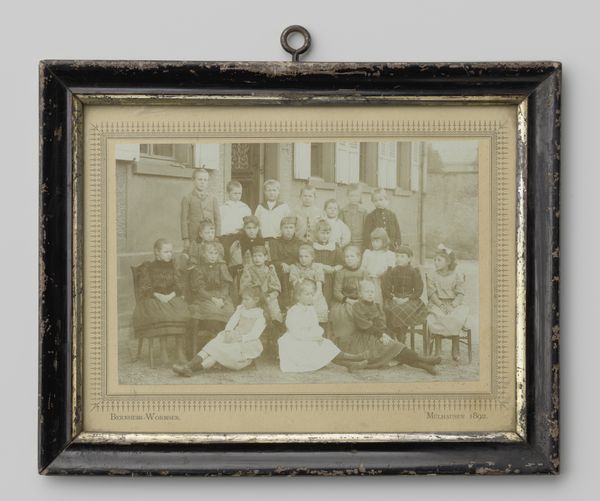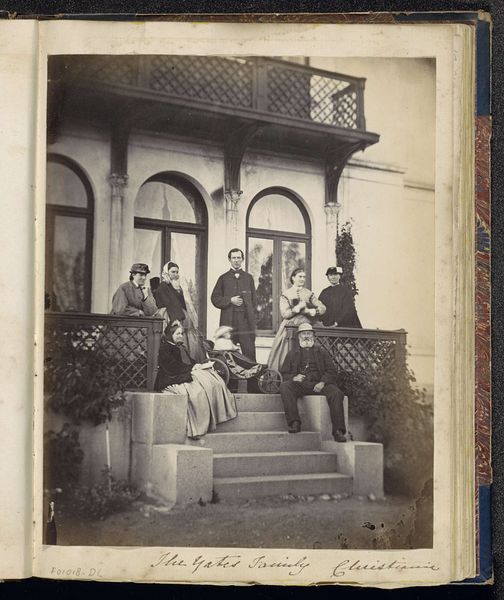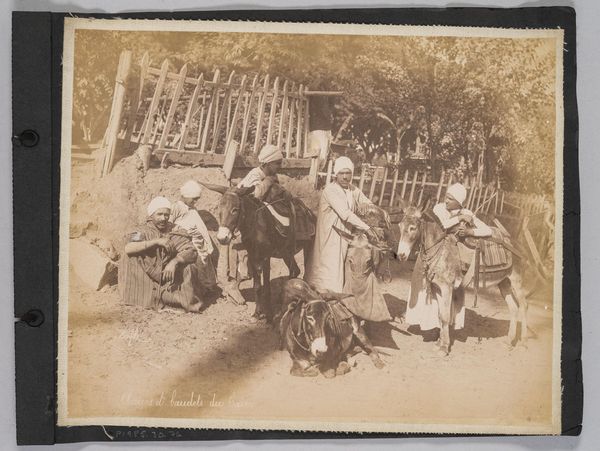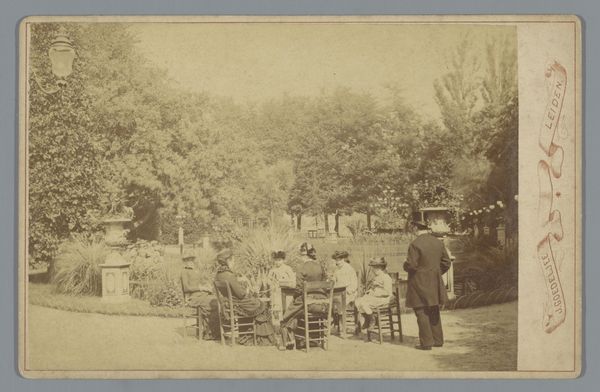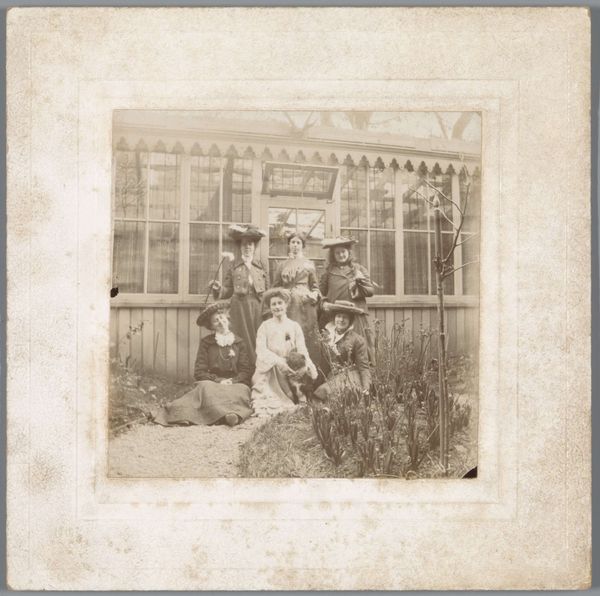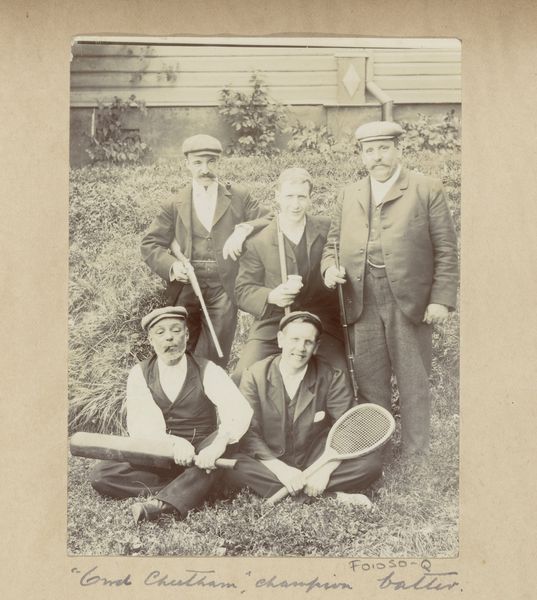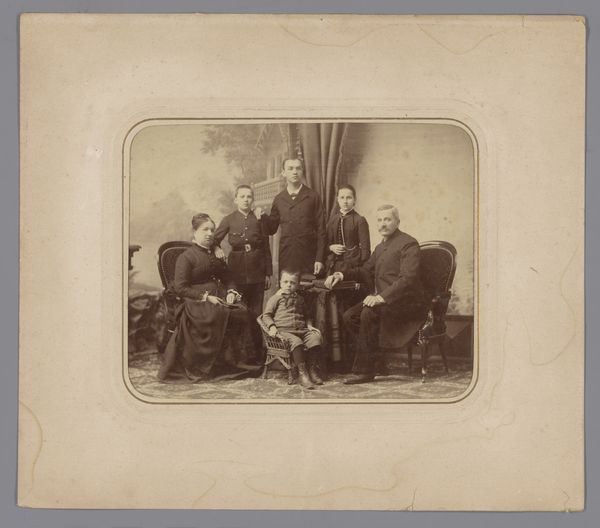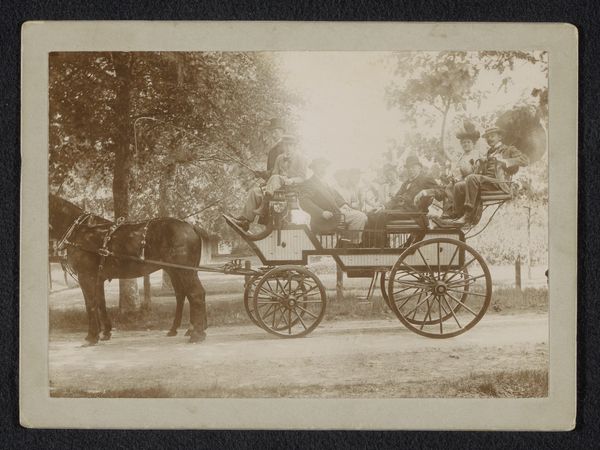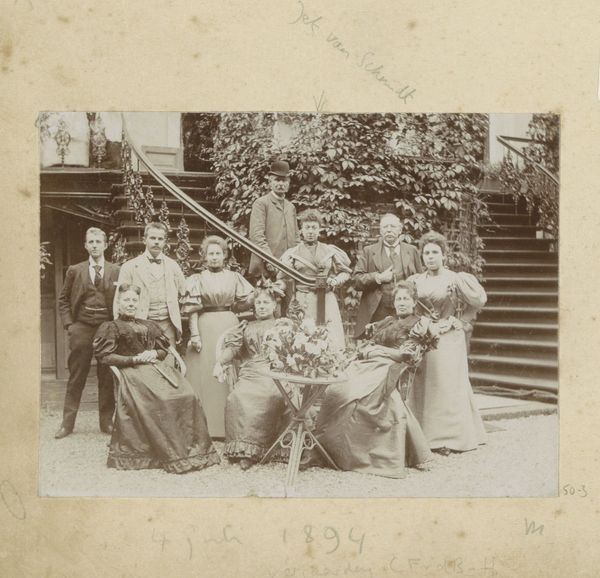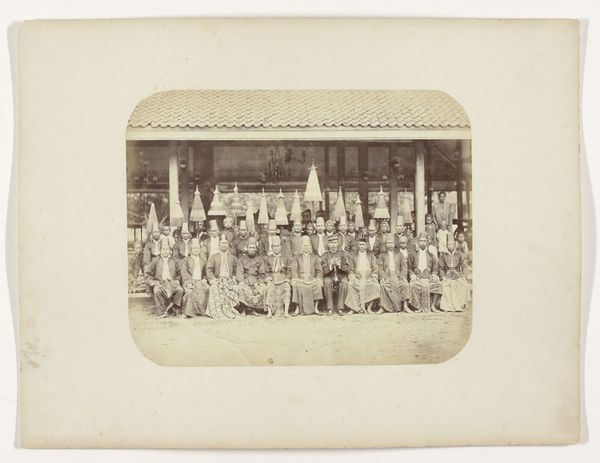
print, photography, gelatin-silver-print
#
portrait
#
african-art
# print
#
photography
#
gelatin-silver-print
Dimensions: height 120 mm, width 180 mm
Copyright: Rijks Museum: Open Domain
Curator: Standing here, we're observing a gelatin silver print dating from approximately 1903 to 1908, titled "Muziekorkest Gewapende Politie Suriname," housed right here at the Rijksmuseum. Editor: The mood strikes me immediately. There's such formality, but also something profoundly human in this portrait. The expressions of the men and their various instruments give it a tangible quality, like music captured in stillness. Curator: Absolutely. Consider that the men featured were members of the armed police orchestra in Suriname during a period of Dutch colonial rule. The image presents them with dignity, consciously projecting a refined image. Editor: Refined, yes, but for whose gaze? We have to acknowledge the power dynamics inherently at play when viewing colonial photography. It’s impossible to separate this seemingly benign group portrait from the context of domination, a representation used as propaganda. Who had access to view and celebrate this? What narratives were created by and for the colonists? Curator: A vital point. Early photography in colonies served multiple purposes; scientific record, cultural documentation, and, undeniably, reinforcing power structures through carefully constructed imagery. But the subjects had agency as well. Their individual expressions disrupt a solely colonial read. Editor: And agency always fights power in the image! Their presence asserts something beyond just subjugation. There's community here, resilience. I think about their families, their lives outside this moment, resisting the limitations placed upon them by colonialism. The uniforms and instruments belie so much under the surface of these people. Curator: Exactly. Furthermore, music itself can function as resistance or celebration within that same colonial structure. It served as entertainment but was a vital means of expressing cultural identity and perhaps conveying messages outside the control of the colonizers. Editor: Understanding the layers of historical and cultural complexities intertwined with power relations… It is a very fraught yet very beautiful intersection to study in this context of identity and representation. Curator: Precisely. Seeing "Muziekorkest Gewapende Politie Suriname" pushes us to ask difficult questions and prompts reflection about our relationship to the colonial past.
Comments
No comments
Be the first to comment and join the conversation on the ultimate creative platform.
